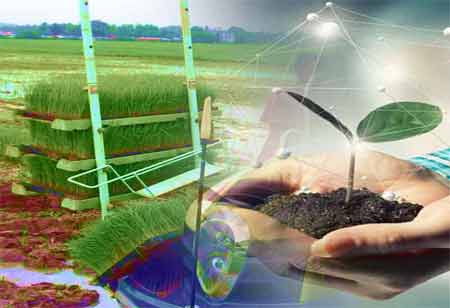Thank you for Subscribing to Agri Business Review Weekly Brief
Crop Protection Companies to Deliver More Innovative Solutions
Introducing new active ingredients (AI) to market is a lengthy, expensive, and challenging process with costs and increased time.

By
Agri Business Review | Wednesday, January 18, 2023
Stay ahead of the industry with exclusive feature stories on the top companies, expert insights and the latest news delivered straight to your inbox. Subscribe today.
Organisations are changing soil-health-based agricultural management practises by developing innovative crop protection solutions targeting soil health through direct impact on soil or facilitating practices that encourage soil health outcomes.
FREMONT, CA: Introducing new active ingredients (AI) to market is a lengthy, expensive, and challenging process with costs and increased time. With the elevating costs, the pace of new product introduction based on new AIs has tapered off in the last few years.
Although the number of AIs companies bring to market diminishes, regulatory challenges continue to increase. The process might not be getting any easier, however, firms are continuing to invest, driven by a major goal of safeguarding yield. Toolbox is essential today, including new crop protection productions, new seed varieties, and digital tools.
The regulatory landscape is becoming more challenging for businesses collecting farmer input and rapidly creating and delivering the products they need. This is in large part due to the much stronger scrutiny of each AI’s environmental impact. It is a lengthy and unclear process globally, making it challenging for science-based companies to get much-needed tools and technologies into farmers’ hands quickly.
Although the rate of new product approvals has decreased in recent years, investment remains high, and the industry has been able to maintain a better product innovation level with other developments such as integrated crop solutions, applications technology, and precision farming. Today's products come from more than 40 different groups, introducing new modes of action to address resistance problems, whether that is for insecticides, fungicides, or herbicides.
This indicates a continuously high level of R&D investment compared to other sectors, with the major companies investing seven to 10 per cent of their sales annually over the last five decades. The cost goes up meeting the higher regulatory study requirements needed to properly characterise products. As regulators are faced with higher volumes of studies to review, the process is longer to introduce a new AI. The regulatory community is keen to ensure that any approvals they offer meet both growers' technological needs as well as society's safety needs, so review times are longer. However, the number of new AIs introduced per decade has been declining every year. In keeping with new safety regulations, many products have been withdrawn from the market over the years through bans or a lack of support during a re-registration process.
The importance of soil health has become an increasingly important part of the global crop protection product development discussion. Crop protection products will have certain levels of soil persistence to ensure the product is available for sufficient time to be effective against their target. They should strike a balance between effectiveness and minimal environmental impact, and reducing soil persistence should be the goal.
Regulatory policies constantly measure soil resistance to a greater or lesser degree. Many companies developing products today believe they can introduce products that play more essential roles in soil health. Soil health-based agricultural management practices are promoted to reduce erosion, increase nutrient efficiency, enhance soil structure, and sustain or increase yields. Developing innovative crop protection solutions targeting soil health outcomes through direct impact on soil or enabling practices promoting soil health results helps change this.





